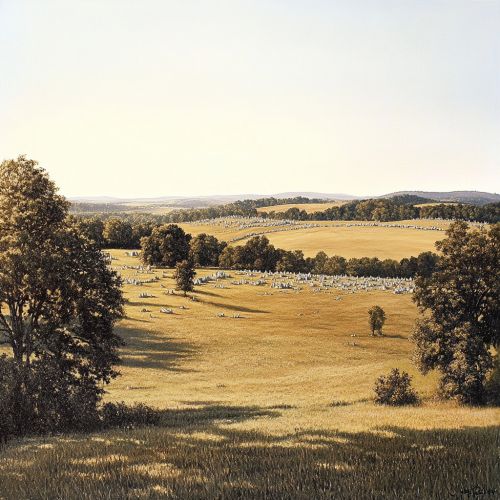Battle of Gettysburg
Introduction
The Battle of Gettysburg was a pivotal engagement during the American Civil War, fought from July 1 to July 3, 1863. It took place in and around the town of Gettysburg, Pennsylvania, and is often described as the war's turning point. The battle involved the largest number of casualties of the entire war and is frequently cited as the war's most famous battle due to its scale, the high stakes involved, and President Abraham Lincoln's subsequent Gettysburg Address. The Union Army of the Potomac, commanded by Major General George G. Meade, defeated attacks by Confederate General Robert E. Lee's Army of Northern Virginia, halting Lee's invasion of the North.
Prelude to the Battle
In the summer of 1863, General Robert E. Lee sought to capitalize on his victory at the Battle of Chancellorsville by launching a second invasion of the North. His objectives were to relieve pressure on war-torn Virginia, influence Northern politicians to give up the war effort, and possibly secure foreign recognition for the Confederacy. Lee's army moved through the Shenandoah Valley, crossed the Potomac River, and advanced into Pennsylvania.
The Union Army, under the new leadership of Major General George G. Meade, pursued Lee's forces. The two armies eventually converged at Gettysburg, a small town with a network of roads that made it strategically significant.
The First Day: July 1, 1863
On the morning of July 1, Confederate forces under Major General Henry Heth encountered Union cavalry commanded by Brigadier General John Buford. Buford's men held their ground until Union reinforcements arrived, including the I Corps under Major General John F. Reynolds, who was killed early in the fighting. The Union forces were pushed back through the town to high ground south of Gettysburg, known as Cemetery Hill.
The Confederates, led by Generals Heth and Richard S. Ewell, failed to capitalize on their initial success. Ewell, who had replaced the late Stonewall Jackson, hesitated to attack the Union positions on Cemetery Hill, allowing the Union to fortify their defenses.
The Second Day: July 2, 1863


On July 2, Lee planned to attack the Union flanks. His strategy involved a series of coordinated assaults on the Union left, anchored at Little Round Top, and the right, near Culp's Hill. However, delays and miscommunications marred the Confederate attacks.
Lieutenant General James Longstreet was tasked with leading the assault on the Union left. His forces engaged in fierce combat at locations such as the Peach Orchard, Wheatfield, Devil's Den, and Little Round Top. The Union forces, notably the 20th Maine Regiment under Colonel Joshua L. Chamberlain, held their ground in a dramatic defense of Little Round Top.
On the Union right, Ewell's forces attacked Culp's Hill but were unable to dislodge the entrenched Union defenders. The day's fighting ended inconclusively, with heavy casualties on both sides.
The Third Day: July 3, 1863
The final day of the battle is best known for Pickett's Charge, a massive Confederate assault on the Union center. Lee believed that a concentrated attack on the Union center, held by Major General Winfield S. Hancock's II Corps, could break the Union line.
After a massive artillery bombardment, approximately 12,500 Confederate soldiers, led by Major General George Pickett, advanced across open fields toward the Union positions on Cemetery Ridge. The charge was repulsed with heavy Confederate losses, marking the high-water mark of the Confederacy.
Aftermath
The Battle of Gettysburg resulted in approximately 51,000 soldiers killed, wounded, or missing, making it the bloodiest battle of the American Civil War. Lee's army retreated to Virginia, and the Confederate invasion of the North was effectively ended. The Union victory at Gettysburg, coupled with the fall of Vicksburg on July 4, 1863, marked a turning point in the war.
President Abraham Lincoln later delivered the Gettysburg Address at the dedication of the Soldiers' National Cemetery in November 1863, emphasizing the principles of human equality and the importance of preserving the Union.
Legacy
The Battle of Gettysburg is remembered as a defining moment in American history. The battlefield is preserved as the Gettysburg National Military Park, attracting millions of visitors each year. The battle has been extensively studied and commemorated in literature, film, and popular culture.
